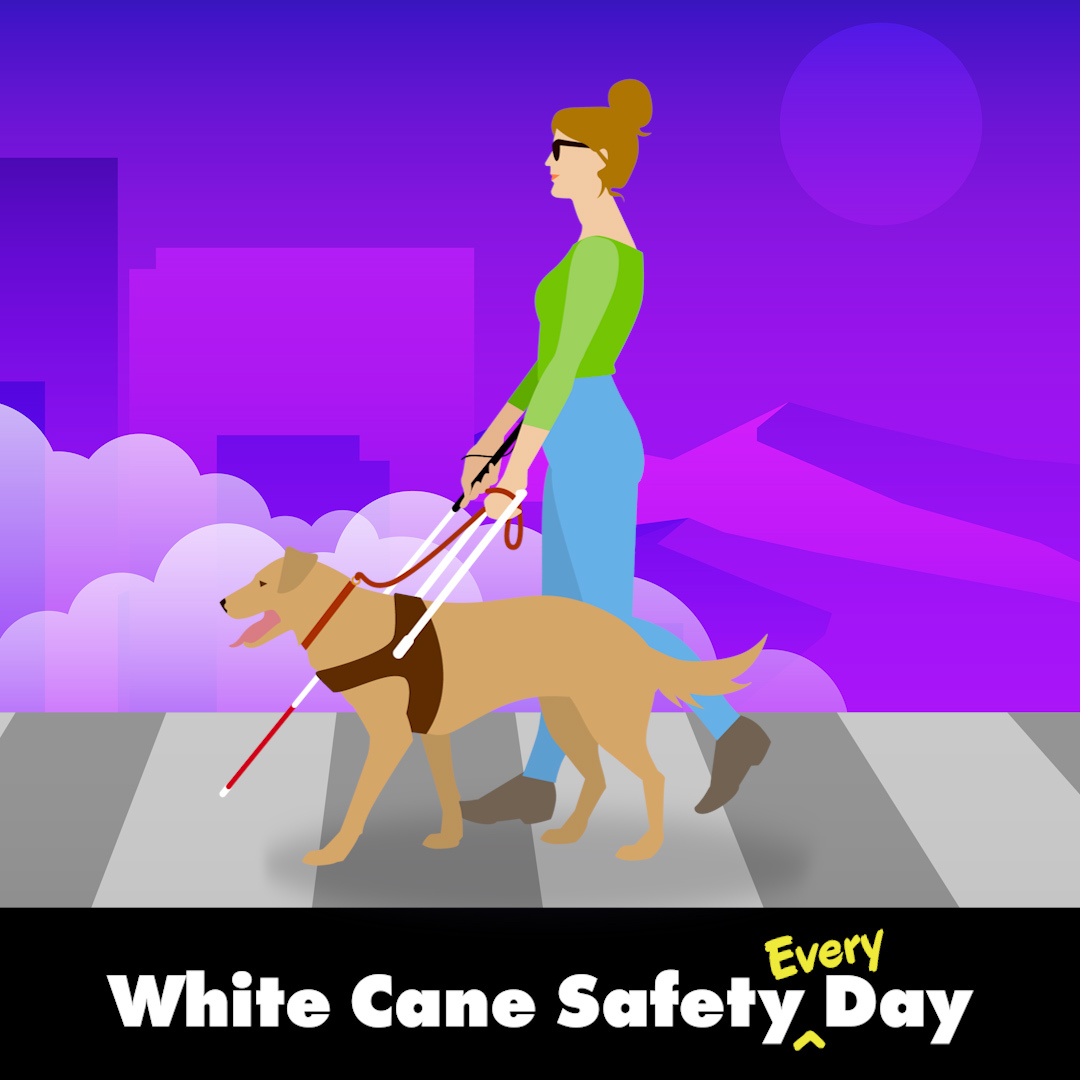October 15 is White Cane Safety Day
You can help blind pedestrians get there safely every day
Oct. 12, 2022
For more information, contact Heidi Manlove, 503-986-4196 or Kevin Beckstrom, 503-986-3430
SALEM — Every year on Oct. 15 we are reminded of pedestrian safety awareness for people traveling on Oregon roads who are blind or have low vision. White Cane Safety Day was established by Congress in 1964 to raise awareness of what white canes mean and encourage safer travel and transit. Although most people who are visually impaired don’t use white canes, it’s estimated that over 100,000 Oregonians live with a visual disability and can be at more risk of a deadly crash involving people driving.
We encourage drivers to learn more about pedestrian safety. Look out for visually impaired pedestrians who use sighted guides, white canes and guide dogs. Blind people often take extra care and precautions to navigate roads safely. Every trip out of the house is calculated, incorporating research on traffic patterns, navigation apps and bright clothes. Despite their preparation, they rely on drivers seeing them, understanding what a white cane or guide dog means, and following the law. Blind pedestrians face safety challenges when crossing at intersections, walking past drivers who are backing up, and failing to hear a silent or quiet car.
Drivers should be extra patient and careful for the safety of these vulnerable road users. Oregon law states: “A driver approaching a pedestrian who has limited vision or a pedestrian who is blind or deaf-blind, who is carrying a white cane or accompanied by a dog guide, and who is crossing or about to cross a roadway, shall stop and remain stopped until the pedestrian has crossed the roadway” (ORS 811.035). If a person crossing the street has a white cane or guide dog, all people driving need to wait for the blind person to cross to the other side of the street and is out of the roadway before they proceed.
Below are more resources available on this topic. Please also help us share these on social media.
White Cane Safety ads- Social Media Short YouTube Videos
These are 5 short video clips (11 secs) that we have posted on Facebook and Instagram for the month of October.
ODOT White Cane Safety Podcast
To celebrate Pedestrian Safety Month, Colby Parkinson from our Pedestrian and Bicycle Safety program explores the challenges that blind and low vision Oregonians experience in the transportation system.
White Cane Safety Day Video #1 - Darian and Marylee
MaryLee and Darian share a bit of insight into what mobility means to them. A white cane user since she was 35, MaryLee is confident that her "antenna" lets other people know not only that she's blind but that's she's in control of who she is and what she's doing. If you see a person using a white cane or a guide dog crossing the street, whether they are in a crosswalk or not, stop and remain stopped until they completely cross the road. If folks who are blind are out there traveling, it's because they want to be living their lives to the fullest.
White Cane Safety Day Video #2 – Stephen Murphy
For White Cane Safety Day, Stephen Murphy talks about the challenges of sudden blindness as an adult, as well as his ability to adapt. His white cane keeps him mobile and independent.
Additional Digital Resources for White Cane Safety Day

|